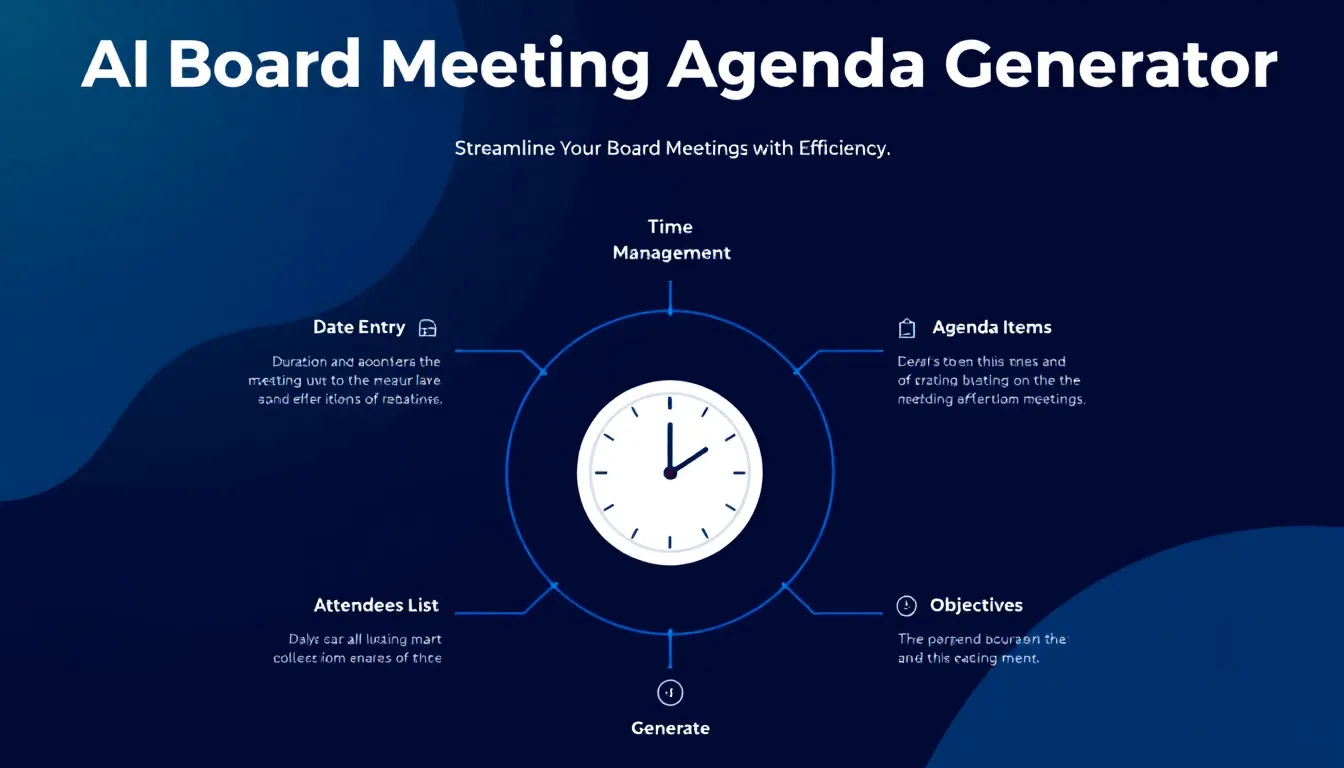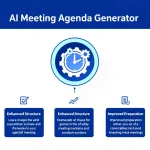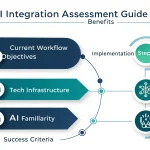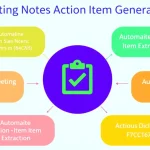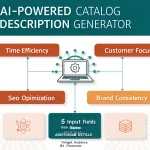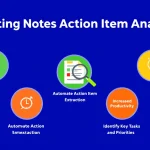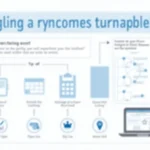AI Board Meeting Agenda Generator
Is this tool helpful?
How to Use the AI Board Meeting Agenda Generator Effectively
The AI Board Meeting Agenda Generator is a powerful tool designed to streamline the process of creating professional and efficient board meeting agendas. Here’s a step-by-step guide on how to use this tool effectively:
1. Enter Meeting Details
- Date of the board meeting: Use the date picker to select the meeting date. For example, choose “July 15, 2023” for an upcoming board meeting.
- Total duration of the meeting in minutes: Input the expected length of the meeting. For instance, enter “180” for a three-hour meeting.
2. List Agenda Items
In the “List of agenda items” textarea, enter each agenda item on a separate line. For example:
- 1. Q2 Financial Performance Review
- 2. Strategic Planning for Expansion
- 3. New Product Launch Discussion
- 4. Board Member Recruitment Update
- 5. AOB (Any Other Business)
3. Add Attendees (Optional)
List the attendees and their roles in the designated textarea. For instance:
- Sarah Johnson, CEO
- Michael Chen, CFO
- Dr. Emily Rodriguez, Head of R&D
- Robert Thompson, Board Chair
- Alicia Gomez, Independent Director
4. Specify Meeting Objectives (Optional)
Enter the main objectives or goals for the meeting. For example:
- 1. Evaluate Q2 performance against annual targets
- 2. Finalize expansion strategy for Asian markets
- 3. Decide on launch timeline for Product X
5. Generate the Agenda
Click the “Generate AI Board Meeting Agenda” button to create your customized agenda.
6. Review and Copy
Once generated, review the AI-created agenda. If satisfied, use the “Copy to Clipboard” button to easily transfer the agenda to your preferred document editor.
Introduction to the AI Board Meeting Agenda Generator
The AI Board Meeting Agenda Generator is an innovative tool designed to revolutionize the way organizations prepare for board meetings. By harnessing the power of artificial intelligence, this tool creates structured, efficient, and professional agendas in a matter of seconds, saving valuable time and ensuring that all crucial topics are addressed effectively.
Purpose and Benefits
The primary purpose of this tool is to automate and optimize the agenda creation process for board meetings. Its key benefits include:
- Time Efficiency: Drastically reduces the time spent on agenda preparation
- Consistency: Ensures a standardized format for all board meeting agendas
- Comprehensiveness: AI-driven suggestions help include all necessary items
- Customization: Adapts to specific meeting requirements and company needs
- Improved Meeting Productivity: Well-structured agendas lead to more focused and efficient meetings
Benefits of Using the AI Board Meeting Agenda Generator
1. Time-Saving Efficiency
One of the most significant advantages of using this AI-powered tool is the substantial time savings it offers. Traditional agenda creation can be a time-consuming process, often taking hours to compile, format, and refine. The AI Board Meeting Agenda Generator reduces this to mere minutes, allowing executives and board secretaries to focus on more strategic tasks.
2. Enhanced Organization and Structure
The tool employs intelligent algorithms to organize agenda items logically, ensuring a smooth flow of topics throughout the meeting. This structured approach helps in:
- Prioritizing critical issues
- Grouping related topics for more cohesive discussions
- Allocating appropriate time to each item based on its importance
3. Consistency Across Meetings
By using a standardized format, the AI generator ensures consistency in agenda structure across all board meetings. This consistency:
- Facilitates easier preparation for board members
- Improves meeting efficiency as participants become familiar with the format
- Enhances professionalism in corporate governance practices
4. Customization and Flexibility
Despite its automated nature, the tool offers a high degree of customization. Users can:
- Adjust time allocations for specific items
- Add or remove agenda items as needed
- Incorporate company-specific elements or recurring topics
5. AI-Driven Insights and Suggestions
Leveraging artificial intelligence, the tool can provide valuable suggestions based on:
- Historical meeting data
- Industry best practices
- Current trends in corporate governance
These insights can help in identifying overlooked topics or improving the overall meeting structure.
Addressing User Needs and Solving Specific Problems
Problem: Time Allocation Challenges
One common issue in board meetings is the improper allocation of time to agenda items, leading to rushed discussions or unfinished business. The AI Board Meeting Agenda Generator addresses this through its intelligent time allocation algorithm.
Time Allocation Formula
$$t_i = \left( \frac{w_i}{\sum_{j=1}^{n} w_j} \right) \times T$$Where:
- $$t_i$$ = Time allocated to agenda item i
- $$w_i$$ = Weight or priority of agenda item i
- $$n$$ = Total number of agenda items
- $$T$$ = Total meeting duration
Example Calculation
Consider a 240-minute board meeting with the following agenda items and weights:
- Financial Review (w = 5)
- Strategic Planning (w = 4)
- Operational Updates (w = 3)
- Risk Management (w = 2)
- Any Other Business (w = 1)
Total weight: 5 + 4 + 3 + 2 + 1 = 15
Time allocations:
- Financial Review: (5/15) × 240 = 80 minutes
- Strategic Planning: (4/15) × 240 = 64 minutes
- Operational Updates: (3/15) × 240 = 48 minutes
- Risk Management: (2/15) × 240 = 32 minutes
- Any Other Business: (1/15) × 240 = 16 minutes
Problem: Inefficient Break Scheduling
Long meetings without proper breaks can lead to decreased attention and productivity. The AI generator incorporates an intelligent break scheduling system.
Break Scheduling Formula
$$b = \left\lfloor \frac{T}{B} \right\rfloor$$Where:
- $$b$$ = Number of breaks
- $$T$$ = Total meeting duration (minutes)
- $$B$$ = Break interval threshold (minutes)
Example Calculation
For a 240-minute meeting with a break interval threshold of 90 minutes:
$$b = \left\lfloor \frac{240}{90} \right\rfloor = 2$$The tool would schedule 2 breaks, optimally placed to maintain attendee focus and productivity.
Practical Applications and Use Cases
1. Quarterly Board Meetings for Public Companies
Public companies often have complex quarterly board meetings covering financial reviews, strategic planning, and compliance updates. The AI Board Meeting Agenda Generator can create a comprehensive agenda that includes:
- Review of quarterly financial statements
- CEO’s strategic update
- Audit committee report
- Compliance and risk management overview
- Shareholder relations update
The tool ensures that each of these critical topics receives appropriate time allocation based on their importance and complexity.
2. Startup Board Meetings
For startups, board meetings often focus on growth strategies, funding, and operational challenges. A typical AI-generated agenda might include:
- Product development progress
- Marketing and user acquisition strategies
- Fundraising plans and investor relations
- Cash flow and runway analysis
- Key hires and organizational structure
The AI tool can adapt the agenda to the startup’s current stage and priorities, ensuring that critical growth-related discussions are given precedence.
3. Non-Profit Organization Board Meetings
Non-profit boards often need to balance mission-driven activities with financial sustainability. An AI-generated agenda for a non-profit might feature:
- Mission impact assessment
- Fundraising campaign updates
- Program effectiveness review
- Volunteer engagement strategies
- Compliance with non-profit regulations
The tool can help non-profit boards maintain focus on their core mission while addressing necessary operational and financial matters.
4. Crisis Management Board Meetings
During times of crisis, boards may need to convene quickly to address urgent issues. The AI Board Meeting Agenda Generator can rapidly create a focused agenda for such scenarios:
- Crisis situation overview
- Immediate action items
- Risk assessment and mitigation strategies
- Communication plan for stakeholders
- Financial impact analysis
The tool’s ability to quickly generate a structured agenda is particularly valuable in time-sensitive situations.
Frequently Asked Questions (FAQ)
Q1: Can I customize the generated agenda?
A1: Yes, the AI-generated agenda serves as a starting point. You can easily modify, add, or remove items as needed to suit your specific meeting requirements.
Q2: How does the AI determine time allocations for agenda items?
A2: The AI uses a combination of factors including the priority or weight you assign to each item, the total meeting duration, and best practices for time management in board meetings.
Q3: Can the tool handle different types of board meetings?
A3: Absolutely. The AI Board Meeting Agenda Generator is versatile and can create agendas for various types of board meetings, including quarterly reviews, strategic planning sessions, and emergency meetings.
Q4: Is it possible to save templates for recurring meetings?
A4: While the current version doesn’t have a built-in template saving feature, you can easily copy and reuse previously generated agendas as a starting point for recurring meetings.
Q5: How does the tool handle confidential information?
A5: The AI Board Meeting Agenda Generator focuses on structure and time allocation rather than content details. You can use generic titles for sensitive topics and add confidential details offline.
Q6: Can the tool integrate with calendar applications?
A6: Currently, the tool doesn’t directly integrate with calendar applications. However, you can easily copy the generated agenda and paste it into your preferred calendar or scheduling tool.
Q7: How often is the AI updated with new board meeting best practices?
A7: The AI is regularly updated to incorporate the latest corporate governance best practices and board meeting efficiency techniques.
Q8: Can the tool handle multi-day board meetings or retreats?
A8: Yes, for longer meetings or retreats, you can generate multiple agendas or use a longer duration. The AI will adjust time allocations accordingly.
Q9: Is it possible to include pre-read materials or attachments with the agenda?
A9: While the tool focuses on creating the agenda structure, you can easily add notes about pre-read materials or attachments in the agenda items’ descriptions.
Q10: How does the AI handle unexpected or impromptu agenda items?
A10: The tool includes an “Any Other Business” section by default, allowing flexibility for unexpected items. You can also manually add or adjust items after the initial generation.
Important Disclaimer
The calculations, results, and content provided by our tools are not guaranteed to be accurate, complete, or reliable. Users are responsible for verifying and interpreting the results. Our content and tools may contain errors, biases, or inconsistencies. We reserve the right to save inputs and outputs from our tools for the purposes of error debugging, bias identification, and performance improvement. External companies providing AI models used in our tools may also save and process data in accordance with their own policies. By using our tools, you consent to this data collection and processing. We reserve the right to limit the usage of our tools based on current usability factors. By using our tools, you acknowledge that you have read, understood, and agreed to this disclaimer. You accept the inherent risks and limitations associated with the use of our tools and services.
